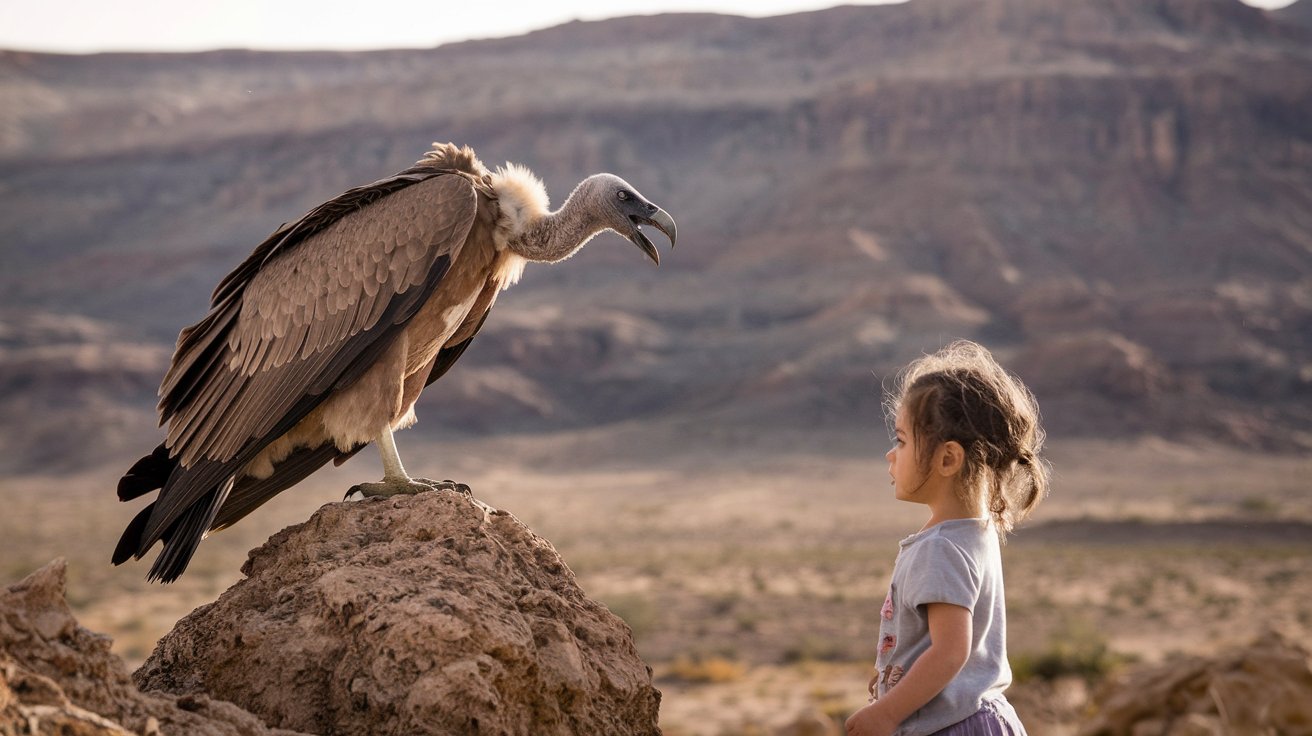
What is the story behind "The Vulture and the Little Girl"? This haunting photograph, taken by South African photojournalist Kevin Carter in 1993, captures a frail, famine-stricken child in Sudan with a vulture ominously lurking nearby. The image, first published in The New York Times, shocked the world and sparked intense debate about the ethics of photojournalism. Carter, part of the Bang-Bang Club, faced severe criticism for not helping the child. Despite winning the Pulitzer Prize, the emotional toll of his work led to his tragic suicide in 1994. This photograph remains a powerful symbol of human suffering and the complex responsibilities of those who document it.
Key Takeaways:
- Kevin Carter's haunting photograph of a starving child and a vulture in Sudan sparked intense public reaction and won prestigious awards, but also raised ethical dilemmas for photojournalists.
- The photograph, "The Vulture and the Little Girl," captured a moment in time during one of the most severe famines of the 20th century, leaving a lasting impact on popular culture and serving as a cautionary tale about the personal costs of photojournalism.
The Photographer and Context
Kevin Carter, a South African photojournalist, captured one of the most haunting images in photojournalism history. His work often focused on the human cost of conflict and famine.
- Kevin Carter grew up during the apartheid era in South Africa.
- He became a photographer to document the extreme violence and suffering he witnessed.
- Carter's work often highlighted the human cost of conflict and famine.
The Photograph
Taken in Ayod, Sudan, during a severe famine in 1993, the image shows a frail child with a vulture looming in the background.
- The photograph was taken in Ayod, Sudan (now South Sudan), during a severe famine in 1993.
- The image depicts a child who had collapsed while trying to reach a United Nations feeding center.
- A vulture is seen eyeing the child from nearby, creating a sense of urgency and horror.
Initial Publication and Public Reaction
The photograph first appeared in The New York Times and caused an immediate sensation, sparking intense public reaction.
- The photograph first appeared in The New York Times on March 26, 1993.
- The caption read: "A little girl, weakened from hunger, collapsed recently along the trail to a feeding center in Ayod. Nearby, a vulture waited."
- Many readers were outraged that Carter did not intervene to help the child.
Editorial Response and Awards
To address public concerns, The New York Times published a special editorial. Despite the controversy, the photograph won prestigious awards.
- The New York Times published a special editorial on March 30, 1993, to address public concerns.
- The editorial stated that the child had recovered enough to resume her trek after the vulture was chased away.
- The photograph won the Pulitzer Prize for Feature Photography in 1994.
Kevin Carter's Background and The Bang-Bang Club
Carter's background and his association with the Bang-Bang Club played a significant role in his career and the psychological toll it took on him.
- Kevin Carter grew up in South Africa during the apartheid era.
- He was part of a group of photojournalists known as the Bang-Bang Club.
- The Bang-Bang Club documented extreme violence in South African townships.
Photographing Suffering and Controversy
Carter often expressed regret about not intervening in situations like the one depicted in the photograph. The image was criticized for its perceived inhumanity.
- Carter often expressed regret about not intervening in situations like the one depicted in "The Vulture and the Little Girl."
- He was working under strict guidelines that prohibited him from touching famine victims to prevent the spread of disease.
- Some argued that Carter should have dropped his camera to help the child.
Kevin Carter's Personal Struggles and Suicide
The psychological toll of his work and the public outcry proved too much for Carter, leading to his tragic end.
- Carter's work took a significant psychological toll.
- On July 27, 1994, Kevin Carter took his own life by carbon monoxide poisoning.
- His suicide note expressed deep regret and depression, citing financial struggles and the emotional weight of his work.
The Child's Fate and Impact on Awareness
The child in the photograph, later identified as Kong Nyong, survived the famine but died of an unrelated illness in 2007. The photograph raised significant awareness about the Sudan famine.
- The child in the photograph was later identified as Kong Nyong from Ayod.
- Kong Nyong survived the famine but died of an unrelated illness in 2007.
- The photograph raised significant awareness about the Sudan famine.
Ethical Considerations and Historical Context
The photograph highlights the ethical dilemmas faced by photojournalists and captures a moment in time during one of the most severe famines of the 20th century.
- The photograph highlights the ethical dilemmas faced by photojournalists.
- Susan Sontag argued that looking at such images of suffering can be both shameful and educational.
- The Sudan famine was part of a broader humanitarian crisis in the region.
Operation Lifeline Sudan and Photographer's Perspective
Operation Lifeline Sudan invited photojournalists to report on conditions in the region. Carter described his thought process when taking the photograph.
- Operation Lifeline Sudan invited photojournalists to report on conditions in the region.
- Kevin Carter described his thought process when taking the photograph: "This is the ghastly image of what is happening to thousands of children."
- He emphasized the need to document such atrocities visually, despite the emotional toll it took on him.
Photographic Technique and Symbolism
Carter carefully positioned himself to capture the vulture and child in focus. The photograph has been interpreted as an allegory or symbol.
- Carter carefully positioned himself to capture the vulture and child in focus.
- He waited for twenty minutes until the vulture was close enough, then chased it away to take the photograph.
- Some see the vulture as capitalism, the child as Sudan, and Carter himself as the indifference of the world.
Cultural Impact and Legacy
"The Vulture and the Little Girl" has had a lasting impact on popular culture and continues to influence photographers and journalists today.
- The photograph has been referenced in various media, including films and documentaries.
- Kevin Carter's legacy extends beyond his work; it also serves as a cautionary tale about the personal costs of photojournalism.
The Haunting Legacy of a Single Photograph
"The Vulture and the Little Girl" remains one of the most powerful images in photojournalism. Kevin Carter's photograph, taken in Sudan during a severe famine in 1993, captured the world's attention and sparked intense debate about the ethics of photojournalism. The image's stark portrayal of human suffering, with a vulture looming over a frail child, highlighted the dire conditions in Sudan and led to increased humanitarian aid.
Carter's work, while celebrated, came at a great personal cost. The emotional toll of documenting such suffering contributed to his tragic suicide in 1994. Despite the controversy, the photograph raised significant awareness about the Sudan famine and continues to influence discussions on the responsibilities of photojournalists.
This haunting image serves as a reminder of the power of photography to evoke strong emotions and drive change, while also highlighting the ethical complexities faced by those who document human suffering.
Frequently Asked Questions
Was this page helpful?
Our commitment to delivering trustworthy and engaging content is at the heart of what we do. Each fact on our site is contributed by real users like you, bringing a wealth of diverse insights and information. To ensure the highest standards of accuracy and reliability, our dedicated editors meticulously review each submission. This process guarantees that the facts we share are not only fascinating but also credible. Trust in our commitment to quality and authenticity as you explore and learn with us.


